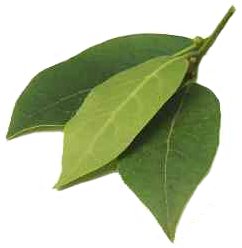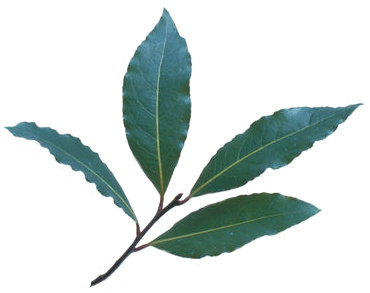

Bay

Laurus. (Latin name for these plants.) Lauraceae. Two species of evergreen trees or shrubs. Leaves alternate, simple, semi-rigid, aromatic when crushed. Inflorescence an axillary cluster, flowers unisexual or rarely hermaphrodite; perianth 4-parted, male flowers with at least 12 stamens; anther opening by valves; female flowers with 2-4 staminodes. Fruit a berry, subglobose, black. S Europe, Canary Islands, Azores. CultivationOccurring in moist rocky valleys around the Mediterranean, and widely naturalised in similar climates, Laurus nobilis is widely grown for its foliage both as an ornamental and culinary herb. Tolerant of clipping, it is grown as screening and hedging in essentially frost-free zones, and is well suited to its traditional use as a tub or large pot specimen trained as a standard or pyramid. Laurus nobilis is realiably hardy to -5ºC; given perfect drainage, warm wall placement and protection from cold drying winds, it will withstand occasional lows to -15ºC and although it may then defoliate, it will recover in spring and early summer. Formally trained specimens may be more safely overwintered under glass. Grow in a moisture-retentive but well-drained fertile soil in full sun. In containers use a high-fertility loam-based mix and liquid feed fortnightly when in full growth. Overwinter in cool, well-lit and well-ventilated conditions with a maximum temperature of 10ºC. Trim formal shapes in summer using secateurs rather than shears to avoid unsightly damage to the foliage. Propagate named varieties by semi-ripe cuttings in summer or by basal hard-wood cuttings of the previous season’s growth in mid to late winter; root in a closed case with bottom heat. Increase species by seed sown in autumn. Laurus azoricaCANARY LAUREL. Tree to 10m (more in habitat), branches robust. Young branchlets flushed purple, Soft-pubescent, aromatic when crushed. Leaves 5-12 x 3-8cm, lanceolate-elliptic to suborbicular, apex acute, base rounded to cuneate, dark green, glabrous, shining above, paler and pubescent, especially on midrib beneath, with conspicuous venation; petiole to 1.2cm. Flowers unisexual, to 9mm across, green-yellow, peduncles pubescent. Fruit 1.2cm, black, ovoid; peduncle 6mm. Canary Islands, Azores. Z9. Laurus nobilis
TRUE LAUREL; BAY LAUREL; SWEET BAY; BAY TREE. Small tree or shrub 3-15m, sometimes more, densely branched. Young branchlets glabrous. Leaves 5-10 x 2-4cm, alternate, narrowly elliptic to ovate, apex tapered, acute, base tapered, margin often undulate, dark green, glabrous and shining above, glabrous beneath; petiole to 8mm. Flowers unisexual, green-yellow, small, peduncle short. Fruit 1-1.5cm, ovoid, black, shiny; peduncle 3-4mm. Mediterranean. ‘Aurea’: leaves tinged yellow. ‘Angustifolia’: leaves 3-7 x 0.6-2cm, narrowly oblong-elliptic. ‘Crispa’ (‘Undulata’): leaf margin conspicuously undulate. Z8.
|
Home
Grow Nuts
Grow Fruit
Grow Vegetables
Cyberian Index
If you like this website and want one of your own contact
Cyberian All information correct at
time of publication and open to updates as necessary. No part of this website,
or its vectors, may be produced in any shape or form, using any type or design
of medium, system, equipment or otherwise without the prior written consensual
notice of the Cyberian. Any breach of these requirements will result in the
appropriate action. If in doubt, e-mail contact is recommended.
Some components of this website were obtained as open-source software and are
used in the same non-profit manner on this website.